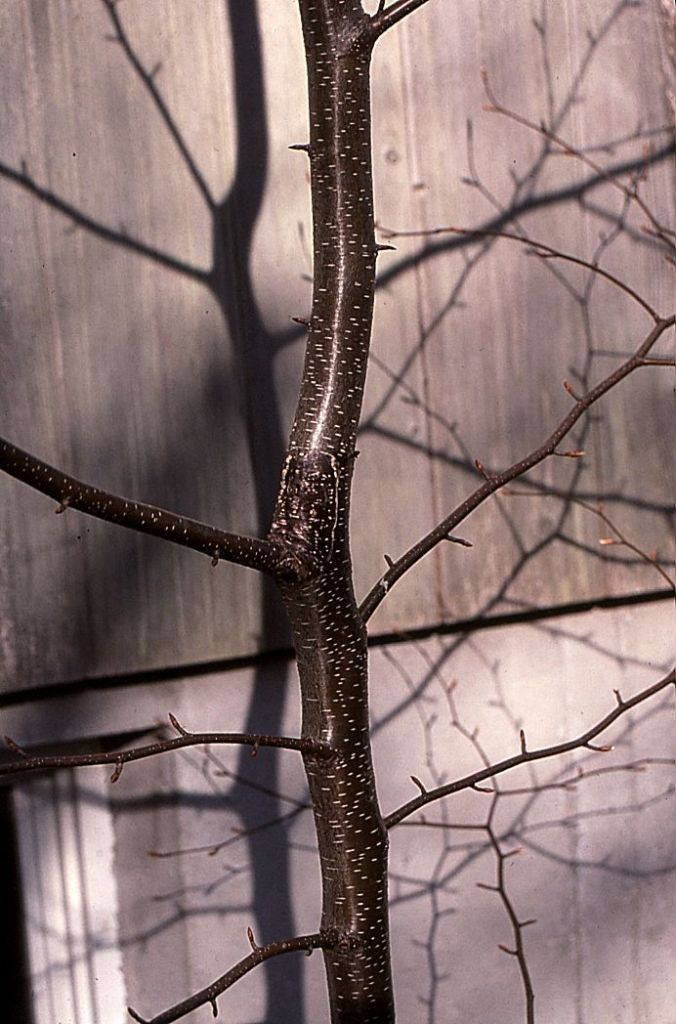It began life on the shady east side of the house, this gift from Mother Nature, improbably nosing its way up through a path of dirt and gravel to reach the light. Even as a seedling, I knew it was special.
Growing straight and tall with no help from me (save supportive adoring looks and whispered sweet nothings), the object of my affection developed into an elegant tree, unlike any I had.
Yet, that’s not entirely true. The lovely tiered branching was similar to a nearby dogwood and the foliage was almost identical to a white-barked weeping birch which succumbed to disease years before.
A romantic dalliance between a dogwood and a birch? No. I don’t think so. Besides, no way their progeny could possess the tree’s resplendent mahogany-red, Black Cherry Tree like bark.
Actually, the richly painted bark was a dead giveaway, but I didn’t get it until a tree guru came to visit. He took one look, broke off a twig, handed it to me and said: “Smell this.” Ah hah! Unmistakable. The delicious, heady aroma of wintergreen. I should have known.
My treasure, Betula lenta, commonly called Sweet Birch or Cherry Birch in apt tribute to its unique aroma and bark, is native to the U.S.A. For years, the tree was the primary source of the extract, oil of wintergreen, used to flavor medicine and candy. Author Donald Culross Peattie informs us that the sap was also the essential ingredient of Birch Beer; and in his noted work, A Natural History of Trees of Eastern and Central North America (Houghton Mifflin Co. 1950), he shares an old-time recipe:
“Tap the tree as the Sugar Maple is tapped, in spring when the sap is rising and the buds are just swelling; jug the sap and throw in a handful of shelled corn, and natural fermentation — so the mountaineers tell us — will finish the job for you.”
(Hopefully, this brew didn’t finish off the mountaineers as well!)
In the foreword of his book, Peattie voices an intention to aid in the identification of trees, and the book includes valuable, detailed descriptions. But he also prized what makes a tree most interesting and important to man. “Almost every tree in our sylva,” he observed, “has made history, or witnessed it, or entered into our folkways, or usefully become a part of our daily life. To tell a little of these things is the main purpose of this book.” And these fascinating, informed discussions make the book a must-read.
Someone once said to Peattie: “I see you could not resist the temptation to be interesting.” Unfortunately, his book is out of print. Do search it out. It’s a treasure.
And so is my gift from Mother Nature, Betula lenta (Cherry Birch). Photos below.


